by Abdul Alkalimat
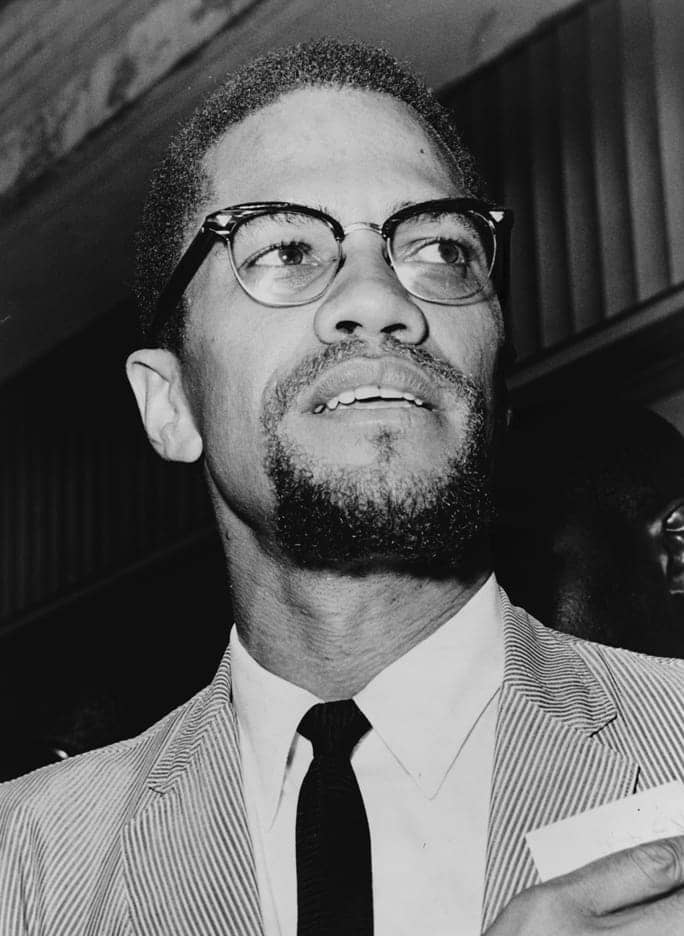
We can advance our thinking through deep and thorough criticism of this book. We are facing a challenge to our perspective, philosophy and politics for Black liberation. We respect Manning Marable and ourselves by taking him seriously and raising our critique to the highest level. Many will oppose and even resent this review, but I write for the brothers and sisters who will dare to struggle to take the hardcore stance we need for victory.
First came the book, days after Marable’s death, then an avalanche of praise and polemic vaulting Marable into the esteemed ranks of ruling class darling public intellectuals. I collected and sent, to the H-Afro-Am list, nearly 100 reviews and commentaries on this Marable book. They range from “magnificent,” “magisterial” and “a magnum opus of a life’s work based on 20 years of research,” to “sloppy,” “unprofessional” and “speculative based on logical fallacy.” Why such extremely opposite views of this book?
Of course we have been here before with books trying to redefine major historical figures under the pretext of making them more human. This is usually done with innuendo, hearsay and gossip supported by state surveillance reports, all amounting to nothing that can be supported with responsibly sourced data or withstand academic peer review.
The main trend uniting these books is their focus on redirecting the force of revolutionary nationalism towards social democracy reform of a kind that finds its home in the capitalist Democratic Party or towards the figure’s personal or sexual identity, being as influential as political identity. Such work has been written about, among others, Nat Turner (Styron 1976), Paul Robeson (Duberman 1989), Martin Luther King (Garrow 1987, Dyson 2000) and Malcolm X (Perry 1991, Lee 1992). As a generational deviation, this trend is exposed in the 2008 book, “Betrayal,” by Houston Baker. Marable’s book somewhat differs from this trend but nevertheless fits the genre.
It is necessary to critique this book for at least three reasons. First: Marable speaks from within the movement with the legitimacy of being a Black studies professor at an ivy-league school. This reverses the “street cred” marshaled by Spike Lee for his 1992 film, “Malcolm X.” Many have learned from Marable and, given his recent death, are not open to deep and revealing criticism. But this does not serve our movement. Silence never trumps critique. As on Malcolm, so on Marable on Malcolm.
Second: The rulers are making the Marable argument their own, as are the reigning Black public intellectuals, namely Henry Louis Gates, Mike Dyson, Cornel West, Peniel Joseph, Nell Painter etc. It is unprecedented for a book on a leading revolutionary nationalist to be positively reviewed in the main English language capitalist media, i.e., the New York Times, Washington Post, Wall Street Journal, Guardian (UK), Financial Times (UK) and so on. Reviews are in all the major European languages as well. They hyped the book into the New York Times hardback non-fiction bestseller list for five weeks: April 24 at number three on the list, May 1 at six, May 8 at 13, May 15 at 16 and May 22 at 34.
But third and most important of all is the fact that the issues arising from the book are fundamental and may influence both what and how we think. This is my main concern. Elijah Muhammad wrote several books on “How to Eat to Live.” Now we need to focus on how to think to live! And by live, I mean to affirm our radical Black tradition, to critique and resist all forms of oppression and exploitation and to chart a path of social justice toward social transformation.
We need to consider perspective, philosophy and politics in critiquing “Malcolm X: A Life of Reinvention.” Our concern is to probe past the specific inaccuracies, innuendos and judgmental conclusions to get at the basics of how to think to live.
Perspective
First, the question of perspective: Whose eyes do we use to see? Whom do we intend to hear us? One of the great paradigm shifts of Black studies is to reclaim and reorient the relationship between Black intellectuals and their community. We began to speak to and with each other without necessarily seeking the approval of white authority. We sought peer review from each other and the brothers and sisters off campus. We wanted to understand each other, map our agreements and disagreements, find the intertextuality of our traditions – meaning Black liberation theology, womanism, nationalism, pan-Africanism and socialism – and base our understandings on the dogmas and debates within these traditions.
Marable, at page 492 of “Malcolm X: A Life of Reinvention,” says this of his collaboration with his Viking editor: “Kevin and I communicated almost daily, discussing various versions of chapters, in the effort to build a narrative to reach the broadest possible audience.”
This explains why he regards the Organization of African American Unity (OAAU) as “controversial,” page 2, and not merely what it was: An attempt to bring the united front strategy of the Organization of African Unity to the Black liberation movement. Who considered it controversial? He refers to alleged “anti-semitic slurs,” page 246, without putting this in the context of a necessary struggle against Zionism and the relative power of Blacks and Jews in New York City.
He regards the surveillance of the state as legitimate rather than as flawed in its spreading of disinformation to discredit and disorient. No serious Black liberation perspective would allow this.
On the one hand, Marable contributes interesting summations of Harlem, page 51-64, and Islam, page 79-86, but he is noteworthy for not engaging any of the major writers who have done serious research which has resulted in viewpoints different from his own. A good example of this is Bill Sales’ work on the OAAU, listed in the bibliography but not engaged in the text.
Nor does Marable engage the primary references used by Sales, notably the main state surveillance of the OAAU. And the same goes for James Cone and his definitive comparison of Malcolm X and Martin Luther King. Both Sales and Cone were members of the Malcolm X Work Group, a collective of intellectual activists working collaboratively on research about Malcolm X and holding important symposia in 1987, 1988 and 1989.
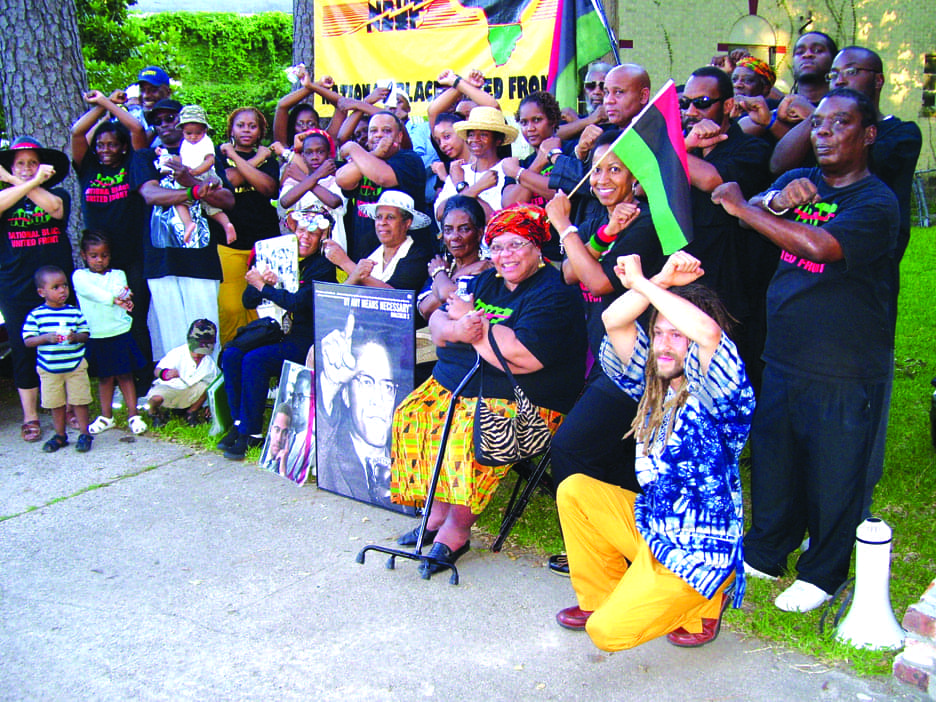
Perhaps the most egregious omission in this regard is the failure to mention Preston Wilcox. Not only had Preston been a professor at Columbia University, but he was the founder of the Malcolm X Lovers Network. As a community-based archivist, for decades he sent out mailings of the news clippings and ephemera he collected at the community level, flyers of events, petitions, documentation of naming ceremonies, debates, lectures, conferences etc. He was a long time resident of Harlem and left his papers to the Schomberg Center. To ignore Preston Wilcox is to show no respect for the Black community or its community-based intellectuals who have always kept the memory of Malcolm alive.
The perspective of Marable’s book is not from the Black studies approach of respecting our own tradition. Instead, it gives credence to such as the Bruce Perry book on Malcolm, 1991, which was written as a police agent’s attack, filled with lies and innuendo. What was Marable thinking? Or not thinking?
Perhaps the most cold-blooded negation is his statement that Malcolm has to be resurrected for Black people where, most certainly, he should have said white people. Black people have never forgotten Malcolm X
Philosophy
Now let us take up issues of philosophy. Here, I want to focus on two questions: What is real and how does reality change? In other words, this is an investigation as to whether Marable uses a dialectical materialist philosophy in this book. How was Marable thinking?
First, what is dialectical materialism? Materialism is a philosophical position that affirms the existence of the material world outside of and independent of our consciousness and hence we must be in the world and engage it in order to come to any understanding of it. This means that when you want to speak about the world, you have to provide material evidence so that others can evaluate whether and how your words correspond with material reality.
Dialectics is about the nature of reality, that everything is in motion and that this motion reflects the conflicting tensions between contradictions. Most things have many contradictions, but in general there is always a principle contradiction that dominates the identity of that reality. External contradictions are the conditions for change but internal contradictions are the basis for change.
So to understand something, we have to include both the external and the internal contradictions as part of our analysis. This is a philosophical approach that is essential for understanding the complexity of the world, human society and of course important historical figures.
In sum, we can say that philosophy is not – and should not be portrayed as – a mystery but something that all of us can master. This is clearly a different approach to philosophy than the archaic approaches usually associated to philosophy as an academic discipline. For our purposes here, there are two fundamental philosophical questions:
1. How do we know something? This gets at our grasp of material reality. We all think we know some things, so how do we know what we think we know?
2. And so what? How does our understanding capture the nature of reality such that we understand the motion of how things change and how change comes about?
In this regard, Marable sets a high standard for this book:
“My primary purpose in this book is to go beyond the legend: to recount what actually occurred in Malcolm’s life. I also present the facts that Malcolm himself could not know, such as the extent of illegal FBI and New York Police Department surveillance, acts of disruption against him, the truth about those among his supporters who betrayed him politically and personally and the identification of those responsible for Malcolm’s assassination,” page 12.
First, when you apply the revolutionary mandate, “no investigation, no right to speak,” the book comes up short for a lack of evidence. Why not provide the source and let the reader be the judge? Here are some examples of statements with no evidence presented in the 63 pages of footnotes:
1. Page 12 – “55-year-old audio tapes” are cited as having been reviewed by Marable but no additional information is given such as the number of tapes, dates etc. Good scholarship requires documentation of evidence so it can be checked by others.
2. Page 22 – “Amy Jacques Garvey … may have been involved in Eason’s assassination,” a statement based on the conjecture in a secondary source.
3. Page 36 – “He may have also believed that his mother’s love affair [was] a betrayal of his father.” Here, Marable is practicing psychoanalysis without any data to back this conclusion.
4. Page 123 – He states of the Nation of Islam (NOI) membership: “Until 1961, it would expand more than tenfold, to 75,000 members.” Again, no source, so why should we consider this as fact?
5. Page 137 – “James Warden … son of a labor organizer who may once have been a member of the Communist Party.” He interviewed Warden on three occasions, so why no indication of the source of this? Exactly what was said? James Warden, now Abdullah Abdur Razzaq, stated during the Malcolm X Museum forum on the book, held at the Schomburg Center on May 19, 2011, that he was totally misquoted in the book and that he has the transcripts of his interview to prove it. Wassup?
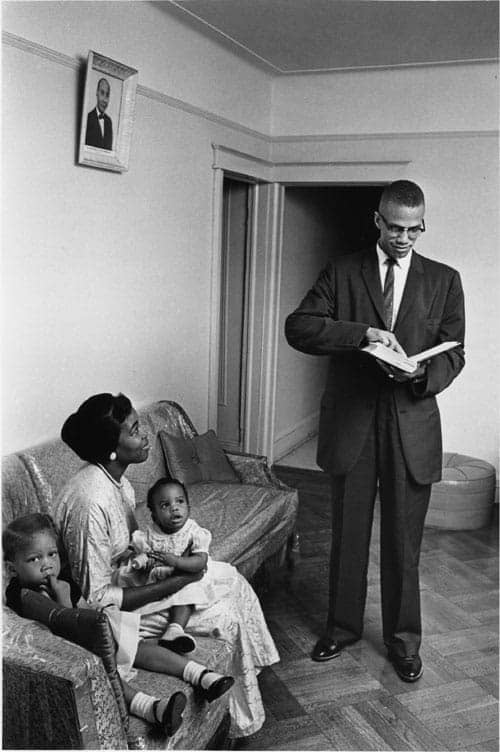
7. Pages 174-175 – “A fire broke out in Louis’ home … most NOI members believed [Ella] Collins was responsible.” Again, no evidence.
8. Page 247 – Elijah Muhammed “interpreted the [autobiography] as evidence of Malcolm’s vanity but [decided], at least temporarily, to cater to this.” Here, Marable’s father-son Freudian analysis on Elijah Muhammad and Malcolm X remains speculative without even a footnote that exposes the intellectual framework for such an idea. This idea is at least more responsibly argued by Wolfenstein, 1981.
9. Page 256 – Regarding Malcolm’s analysis of the 1963 March on Washington, Marable writes that his “version of events was a gross distortion of the facts – yet it contained enough truth to capture an audience of unhappy black militants.” Note the lower case b. Does Marable think his assessment is so self-evident that it needs no support? Who is he writing to?
10. Page 266 – Regarding the notion that Malcolm was romantically involved with a woman whom Elijah Muhammad got pregnant: “No one else, not even James 67X, has made such a claim.” So why make such a big deal out of this sexual controversy in at least five different places in the book?
11. Page 268 – “Nearly every individual he trusted would betray that trust.” Again, such a global statement without proof can only sow the seeds of distrust in the movement and go against those living who were close to Malcolm.
12. Page 284 – “There is evidence that Malcolm may have met with the leaders of the Communist Party’s Harlem branch.” Now, while this is perfectly possible, why no documentation of the evidence? And what about Bill Epton?
13. Page 294 – “It is likely that no more than 200 members in good standing quit the sect: less than 5 percent of all mosque congregants.” Why use the pejorative word “sect” for the NOI? And again, what is the source of these numbers?
14. Page 423 – “Sharon 6X may have joined [Malcolm] in his hotel room.” Another damning statement with no evidence whatsoever.
15. Page 469 – “The organization’s archival heritage … were [sic] largely destroyed and a new memory, branded by orthodoxy, was imposed.” What is the source for this? There are several organizations who claim to have the archives, so why does Marable think that they are gone? And who imposed what new memory? While many may believe this, a serious work of scholarship would provide some kind of proof.

Marable states in the acknowledgments: “Elizabeth Mazucci was largely responsible for building the Malcolm X chronology.” In fact, the first chronology on his Columbia University website was lifted entirely from our BrotherMalcolm.net site without any attribution. I had to protest to Marable and when I got no response from him, I wrote to the Columbia administration. The page was taken down, but no one gave me the courtesy of a response. Marable then reposted the chronology with a new format and a couple of new dates added, but still with no acknowledgement of sources. Marable and I were among the five founders of the Black Radical Congress but this was hardly the move of a comrade, a brother or an honest scholar.
The overarching philosophical error in this book is suggested by the title: “Malcolm X: A Life of Reinvention.” There are two incorrect aspects to this fundamental, idealist error. First, Marable discounts Malcolm’s own autobiography, writing: “In many ways, the book is more Haley’s than its author’s: because Malcolm died in February 1965, he had no opportunity to revise major elements of what would become known as his political testament,” page 9.
I was at the 1992 Knoxville, Tenn., auction of the papers from the Haley estate and reviewed the documents such as the final copy edited by Malcolm and the missing chapters. After but a quick scan, I don’t believe there is any basis for this authorial challenge, which seems like just another attack on Malcolm X. The autobiography was not of a life invented by Alex Haley. The documents in question were purchased by Detroit attorney Greg Reed and we await their release for a closer examination. Reed has also obtained a trove of documents recovered from the papers of a former member of the NOI in Detroit that will increase the archives we have.
Second, Marable suggests that Malcolm opportunistically invented and re-invented himself as a form of self-promotion, “to package himself to maximum effect,” page 10. He thinks the process was based on intentional agency by Malcolm X himself. Does consciousness determine being, or does being determine consciousness? Marable takes the first approach while I suggest a materialist perspective that follows this observation by Karl Marx: “It is not the consciousness of men that determines their being, but, on the contrary, their social being that determines their consciousness.” We must look to the concrete circumstances of Malcolm’s life and how the interplay of external and internal forces played out in his dialectical transformations.
There is no evidence that Malcolm deliberately reinvented himself. Rather, as with anyone who matures, the stages of Malcolm’s life can be understood as resulting from the dialectic of his consciousness and his concrete experiences. His ideas about himself and the world were negated by his experience, compelling him forward, even against his will at times.
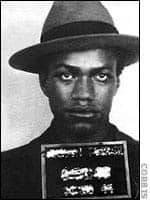
As an outlaw, the state negated him and put him in the joint, where he continued to be a satanic character. In opposition to this negation, his family and fellow prisoners then provided support and a path into a new form of consciousness and being. He cleaned up and began to recapture consciousness, to follow the path of his father and family.
As Malcolm Little, he remained in small Midwestern towns such as Omaha, Milwaukee and East Lansing. As Detroit Red, he was in large East Coast cities like Boston, New York and Washington D.C. What remained a constant was his eagerness to learn and achieve, first as an affirmation of society, then when negated as a negative force in society.
Once Malcolm X joined the NOI, led by his family members, he combined the lessons of both earlier stages of his life and built its membership up by going among the gangsters, the negated and the most oppressed, raising them into the lifestyle that his parents taught him and that Elijah Muhammad reaffirmed – all of them moral, disciplined and proud people.
At least three more forces changed Malcolm X. First, he was appointed by the NOI to become national minister and travel the county at the same time that the national freedom movement was reaching its peak in terms of consciousness and mobilization. He read and engaged with activists. While he changed many, he was also changed.
Second, the police attacked and killed members of the NOI, especially in Los Angeles, and Malcolm was ready for action that far exceeded what the NOI was prepared to do.
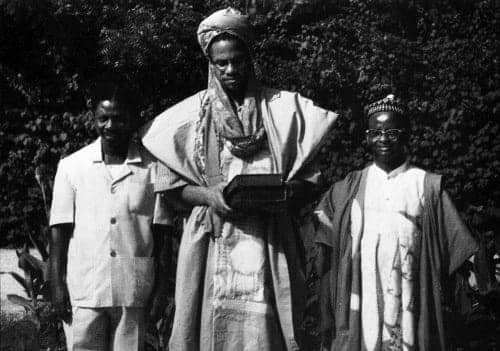
His final break with the NOI was conditioned by these external factors and two more factors internal to the NOI. One was Elijah Muhammad, violating his own moral teachings regarding adultery. The other was Malcolm’s direct violation of the central leadership’s order of silence on the Kennedy assassination.
Elijah Muhammad negated himself; Malcolm, having internalized the external political forces acting on him, negated the order of silence. Malcolm’s new status, free from the confines of the NOI, was reinforced by his continued movement into Sunni Islam via his Hajj and his continued movement into world revolution by extensive trips abroad in Europe and Africa.
My argument is that Malcolm’s life was not an intended self-invention process through his agency, but a global process that summed up the journey so many were to make from being members of the oppressed to embracing Black self-determination and becoming revolutionaries. This is the dialectical materialism of social change in the late 20th century and on that basis people held, and continue to hold, Malcolm in the highest regard and they lived, and continue to live, the life he epitomized.
Politics
Now we come to politics and the strategy and tactics advocated by Malcolm X. Strategy is the long term view of how to seize power and transform society, making clear what forces in society can be counted on and what forces one will have to fight. Strategy also focuses on the goals of a struggle. Tactics are the methods used in the day-to-day struggle in which a lot of flexibility and innovation is needed in the tit-for-tat encounters with the enemy and in mobilizing the masses of people. Tactics are subordinate to strategy and can’t be equated or else one will confuse the zigzag of the struggle with the goal and basic plan for mobilization, organization and victory.
On a global level, Marable gives us a clue of how he invents his own Malcolm X. He states: “The United Nations World Conference Against Racism, held in Durban, South Africa in 2001, was in many ways a fulfillment of Malcolm’s international vision,” page 485. This is ridiculous. Malcolm X would have condemned the Durban meeting just as he did the 1963 March on Washington. Apparently the writer of the epilogue of Marable’s book forgot what the writer of Chapter 4 had written: “Black American leaders, Malcolm now urged, must ‘hold a Bandung Conference in Harlem,’” page 120.
Malcolm’s life was not an intended self-invention process through his agency, but a global process that summed up the journey so many were to make from being members of the oppressed to embracing Black self-determination and becoming revolutionaries.
Durban was a conference in which the imperialists were trying to assert their hegemony over anti-racism and decolonization. Bandung was a third-world gathering to plan unity and resistance in opposition to the imperialists. Compare Wikipedia’s descriptions of each meeting:
- http://en.wikipedia.org/wiki/World_Conference_against_Racism_2001
- http://en.wikipedia.org/wiki/Asian%E2%80%93African_Conference
Malcolm X never believed an honest discussion could be held with imperialists. He would have predicted what actually happened in Durban: The U.S. imperialists blocked any open debate in order to defend their client state, Israel.
On Malcolm X’s political thinking, Marable writes: “Despite his radical rhetoric, as ‘The Ballot or the Bullet’ makes clear, the mature Malcolm believed that African Americans could use the electoral system and voting rights to achieve meaningful change,” page 484. Here Marable refuses to embrace the dialectical thinking of Malcolm X. First, Malcolm’s thinking was grounded in the radical Black tradition. See what Frederick Douglass wrote 100 years earlier in an article titled “The Ballot and the Bullet,” 1859:
“If speech alone could have abolished slavery, the work would have been done long ago. What we want is an anti-slavery government in harmony with our anti-slavery speech, one which will give effect to our words and translate them into acts. For this, the ballot is needed, and if this will not be heard and heeded, then the bullet. We have had cant enough and are sick of it. When anti-slavery laws are wanted, anti-slavery men should vote for them; and when a slave is to be snatched from the hand of a kidnapper, physical force is needed, and he who gives it proves himself a more useful anti-slavery man than he who refuses to give it, and contents himself by talking of a ‘sword of the spirit,’” reprinted in Douglass 1950, page 457-458.
The ballot or bullet theme in Black radicalism is in fact a fundamental tenet of American politics. It was part of the ideological rationale for the American anti-colonial war of liberation from England. It was stated in the 1776 Declaration of Independence, 235 years ago. Read the full text if you want to understand the tradition on which Malcolm X stands – a radical American tradition.

1. The increasingly militant struggles in the South, especially those led by Medgar Evers after the brutal murder of Emmett Till in 1955.
2. Robert Williams and his Monroe, North Carolina, armed self-defense strategy as summed up in his book “Negroes with Guns,” 1962.
3. The armed group Deacons for Defense and Justice formed in Louisiana in 1964.
4. The Revolutionary Action Movement, a group led by Max Stanford, who went on to influence the development of the Black Panther Party. This was the only other organization that Malcolm X joined.
President John F. Kennedy was assassinated in November 1963. Vice President and then President L.B. Johnson consolidated his own leadership by staying the course and supporting major civil rights legislation, so the Civil Rights Act of 1964 was signed into law on July 2, 1964.
During the summer of 1964, SNCC led the civil rights organizations that had formed into a coalition called the Council of Federated Organizations (COFO) in 1962 for a major offensive in Mississippi. This was the Mississippi Summer Project. Hundreds of activists poured into the state and confronted the heart of racist state power. The House passed the bill in February 1965, but a Senate filibuster held it up. The Senate filibuster ended on June 19.
Three movement activists – Goodman, Chaney and Schwerner – were martyred by assassination in Philadelphia, Miss., on June 21. Out of the Mississippi Summer Project came a political party, the Mississippi Freedom Democratic Party, MFDP. It was the MFDP that brought Fannie Lou Hamer to Harlem in 1964, where she appeared on a platform with Malcolm X.
From the local precinct level to a delegation going to the national convention, the MFDP fought the racist party organization that excluded Black people. The main civil rights leaders tried to get the MFDP to accept being seated at the convention without voice or vote. The MFDP, with the SNCC, rejected this as a sellout. In the meantime, the bullets kept flying:
- 1963 – June: assassination of Medgar Evers.
- 1964 – July: rebellion in Rochester, N.Y. August: rebellion in Philadelphia, Pa.
- 1965 – February: assassination of Malcolm X. August: rebellion in Watts, Los Angeles.
- 1966 – June: “Black Power” slogan emerges in militant march in Mississippi. July: rebellions in Cleveland, Ohio and Omaha, Neb. [September: rebellion in Hunters Point, San Francisco. – ed.] October: Black Panther Party is organized in Oakland, Calif.
- 1967 – June: rebellion in Detroit, Mich. July: rebellions in Newark and Plainfield, N.J. October: assassination of Che Guevara.
- 1968 – April: assassinations of Black Panther Bobby Hutton and Martin Luther King Jr. and rebellions in Chicago, Ill., and more than 100 other cities. June: League of Revolutionary Black Workers is organized in Detroit.
- 1969 – December: assassination of Black Panther Fred Hampton.
In 1965-66, the struggle was developing. The defeat of the Watts rebellion led to the ideological advance of the “Black Power” slogan and the new revolutionary organization called the Black Panther Party, followed two years later by workers throwing up a new revolutionary force on the factory floor called the League of Revolutionary Black Workers. The U.S. armed forces put down major urban rebellions and assassination of Black radical leaders continued.
The 1964 presidential campaign brought forward the ultra-right in the form of Barry Goldwater. By 1966, “Black Power” emerged as a key ideological slogan. Electoral victories led to the first major Black mayors of Cleveland, Ohio, and Gary, Ind.
By 1968, things got even more extreme when Alabama Gov. George Wallace, the nation’s leading segregationist politician, ran for president and won the Indiana primary. Richard Nixon was elected president in 1968 and 1972, but was run out of office in disgrace in 1974. A struggle for power was taking place.
Malcolm X laid the basis for understanding these events: the Senate filibuster and racist state power, the murders and the unity between the Klan and the government and the emergence of Black Power in both electoral and more militant forms as well. This was indeed the ballot and the bullet, 20th century edition.
The analysis that Malcolm laid out in his spring 1964 speeches amounts to a theory of the U.S. racist, capitalist state that is based on finding a strategy to fight against it. First, the power of the U.S. ruling class, as based on Southern fascism versus a Black united front; then, armed self-defense for Black liberation as self-determination versus that racist state power.
Marable advances an argument that separates Malcolm from his legacy, a legacy that was in fact us – the Black liberation movement. But no activist in that movement who was in motion at the time will believe his argument. It flies in the face of our experience.
Malcolm X laid the basis for understanding these events: the Senate filibuster and racist state power, the murders and the unity between the Klan and the government and the emergence of Black Power in both electoral and more militant forms as well. This was indeed the ballot and the bullet, 20th century edition.
Why this book, at this time?
We have reviewed Manning Marable’s book on Malcolm X as far as perspective, philosophy and politics. But we still have an outstanding question – why this book, at this time? President George W. Bush was a right-wing standard bearer. We took to the streets to fight his policies. The resistance to the imperialist war on Iraq and then Afghanistan produced a major antiwar movement with heightened consciousness that developed faster and with a sharper focus than the movement against the Vietnam War.
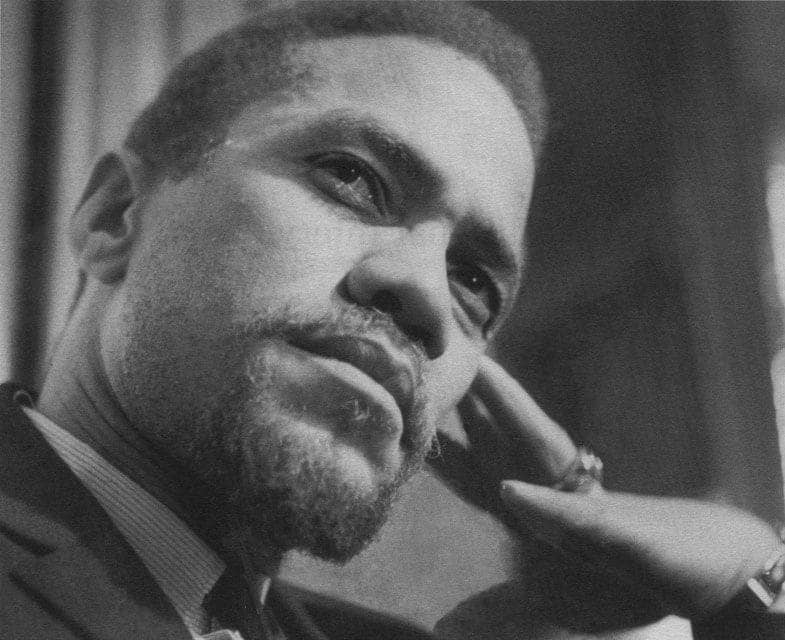
Maybe I should say Obama is our man doing their work. We voted for him but he lacks the guts to fight for us against the rulers and generals who govern. He seeks to compromise with right-wing Republicans and Democrats captured by the fascist Tea Party that holds 10 percent of the seats in Congress.
Rather than give us the Malcolm X of the Detroit speeches, the Malcolm X we love and respect, Marable tries to cut him down to size with unsubstantiated arguments under the guise of humanizing Malcolm X. In summary, Marable gives us a perspective that is outside of the Black studies tradition in his attempt to sell books to a wide American book-buying public.
Marable gives us a philosophy that is mechanical and not dialectical, idealist and not materialist. And he attempts to turn Malcolm X into a social reformer rather than the revolutionary that he actually was. In short, Marable fabricates a Malcolm X who would not take militant and revolutionary action against the global war, poverty or degradations of today. That’s why we have to speak up: to respect our legacy and affirm our future.
Rather than give us the Malcolm X of the Detroit speeches, the Malcolm X we love and respect, Marable tries to cut him down to size with unsubstantiated arguments under the guise of humanizing Malcolm X.
Bibliography
Baker, Houston. “Betrayal: How Black Intellectuals Have Abandoned the Ideals of the Civil Rights Era.” New York: Columbia University Press, 2008.
Clarke, John Henrik, ed. “William Styron’s Nat Turner: Ten Black Writers Respond.” Boston: Beacon Press, 1968.
Cone, James. H. “Martin & Malcolm & America: A Dream or a Nightmare.” Maryknoll, N.Y.: Orbis Books, 1991.
Douglass, Frederick. “The Life and Writings of Frederick Douglas, Volume 2.” Philip S. Foner, ed. New York, International Publisher, 1950.
Duberman, Martin Bauml. “Paul Robeson.” New York: Alfred A. Knopf, 1988.
Dyson, Michael Eric. “I May Not Get There With You: The True Martin Luther King, Jr.” New York: Free Press, 2000.
Engels, Frederick. Translated by Emile Burns. “Anti-Duhring.” Moscow: Progress Publishers, 1947. Available at http://www.marxists.org/archive/marx/works/1877/anti-duhring/.
Garrow, David J. “Bearing the Cross: Martin Luther King Jr., and the Southern Christian Leadership Conference.” New York: William Morrow & Company, 1986.
Lee, Spike. “Malcolm X” [movie], 1992.
Marable, Manning. “Malcolm X: A Life of Reinvention.” New York: Viking, 2011.
Muhammad, Elijah. “How to Eat to Live, Volume 1.” Chicago, Muhammad Mosque of Islam No. 2, 1967. Available at http://www.seventhfam.com/temple/books/eattolive_one/eat1index.htm.
Muhammad, Elijah. “How to Eat to Live, Volume 2.” Chicago, Muhammad Mosque of Islam No. 2, 1972. Available at http://www.seventhfam.com/temple/books/eattolive_two/eat2index.htm.
Perry, Bruce. “Malcolm: The Life of a Man Who Changed Black America.” Barrytown, NY. Station Hill Press, 1991.
Sales, William W. “From Civil Rights to Black Liberation: Malcolm X and the Organization of Afro-American Unity.” Boston: South End Press, 1994.
Stanford, Maxwell C. “Revolutionary Action Movement (RAM): A Case Study of an Urban Revolutionary Movement in Western Capitalist Society.” Master’s thesis. Atlanta University, 1986. Available at http://www.ulib.csuohio.edu/research/portals/blackpower/stanford.pdf.
Styron, William. “The Confessions of Nat Turner: A Novel.” New York: Random House, 1967.
Williams, Robert F. “Negroes with Guns.” New York, Marzani & Munsell, 1962.
Wolfenstein, E. Victor. “The Victims of Democracy: Malcolm X and the Black Revolution.” Berkeley: University of California Press, 1981.
Abdul Alkalimat, Ph.D., is a professor of African American studies at the University of Illinois, the author of “The African American Experience In Cyberspace,” the creator and editor of BrotherMalcolm.net and the compiler of Selected Work on Malcolm X by Abdul Alkalimat. In 1996, he and Bill Fletcher Jr., Manning Marable, Leith Mullings and Barbara Ransby founded the Black Radical Congress. He can be reached at mcworter@illinois.edu.





